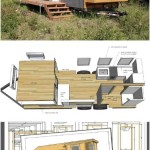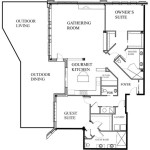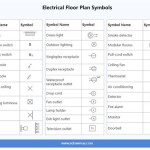Home Assistant Floor Plan Examples
Home Assistant offers a powerful way to visualize and interact with smart home devices through its floor plan feature. This feature allows users to create interactive representations of their homes, placing icons for various devices directly onto a floor plan image. This provides a user-friendly interface for controlling lights, switches, thermostats, and more, directly from a visual representation of their physical space.
Floor plans in Home Assistant are not just static images. They offer dynamic feedback, reflecting the real-time status of devices. For example, a light bulb icon on the floor plan will illuminate when the corresponding light is turned on. This visual representation provides instant confirmation of actions and a comprehensive overview of the home's current state.
Creating a floor plan in Home Assistant involves several steps. First, users need a floor plan image, which can be a blueprint, a hand-drawn sketch, or even a photograph. This image is then uploaded to Home Assistant. Next, users define areas within the floor plan, representing different rooms or zones. Finally, devices are assigned to their corresponding locations on the plan. Home Assistant offers flexibility in customization, allowing adjustments to the image's size, orientation, and aspect ratio.
Several examples demonstrate the versatility of Home Assistant floor plans. A simple example is a single-story home. The floor plan image would depict all rooms on one level. Lights, switches, and sensors can be placed on the plan, allowing users to control them directly by clicking on their respective icons. Information about the device's state, such as a light's brightness or a sensor's reading, can also be displayed.
More complex examples include multi-story homes. In this case, separate floor plans can be created for each level. Users can navigate between floors within the Home Assistant interface, providing a comprehensive view of the entire home. This is particularly useful for managing lighting across multiple floors or monitoring security systems.
Floor plans can also incorporate advanced features like displaying camera feeds. By embedding camera streams directly onto the floor plan, users can quickly access live video from various locations within their home. This enhances security monitoring and provides a convenient way to check on different areas.
Another application is integrating climate control visualization. By overlaying temperature readings or thermostat settings onto the floor plan, users can easily identify temperature variations within their home. This can be helpful for optimizing energy efficiency and ensuring comfortable living conditions.
Beyond residential use, Home Assistant floor plans can be applied to businesses or other complex environments. For instance, a floor plan of an office building can be used to control lighting in different areas, monitor occupancy, or manage access control systems. This provides a centralized interface for managing and monitoring various building automation functions.
The customization options within Home Assistant allow for tailoring floor plans to specific needs. Users can choose from various icon sets, customize colors, and adjust the level of detail displayed. This flexibility ensures that the floor plan effectively represents the specific environment and provides the most relevant information.
Integrating with other Home Assistant features further enhances the functionality of floor plans. For example, automations can be triggered based on device states visualized on the floor plan. This could include automatically turning off lights in unoccupied rooms or adjusting the thermostat based on occupancy patterns.
The use of floor plans also extends to external areas. Users can incorporate gardens, patios, or other outdoor spaces into their floor plans, allowing them to control outdoor lighting, irrigation systems, or other connected devices. This provides a seamless integration of indoor and outdoor smart home control.
Accessibility is another advantage of using floor plans in Home Assistant. The visual representation of the home simplifies interaction with smart devices, making it easier for all users to understand and control their environment. This is particularly beneficial for individuals with limited technical expertise or those who prefer a more intuitive interface.
Maintaining and updating the floor plan is straightforward. As the home evolves, users can easily modify the floor plan to reflect changes in layout or device placement. This ensures that the floor plan remains accurate and continues to provide a useful representation of the smart home environment.
By providing a visual and interactive interface, Home Assistant floor plans simplify smart home control, enhance situational awareness, and offer a powerful tool for managing and monitoring various devices and systems. The flexibility and customization options make it a valuable feature for a wide range of applications, from simple residential use to complex commercial environments.

Floorplan Now Available As A Lovelace Card Home Assistant Community

Floorplan Ui With Color Synced Lights Dashboards Frontend Home Assistant Community

Floorplan For Home Assistant Community

Tablet Floor Plan Dashboard Share Your Projects Home Assistant Community

Floorplan Now Available As A Lovelace Card Home Assistant Community

Floorplan For Home Assistant Community

Tablet Floor Plan Dashboard Share Your Projects Home Assistant Community

Picture Elements Card Home Assistant

Floorplan For Home Assistant Community

Creating Our Floorplan Or Animated Plano Home In Assistant Blog Bujarra Com








